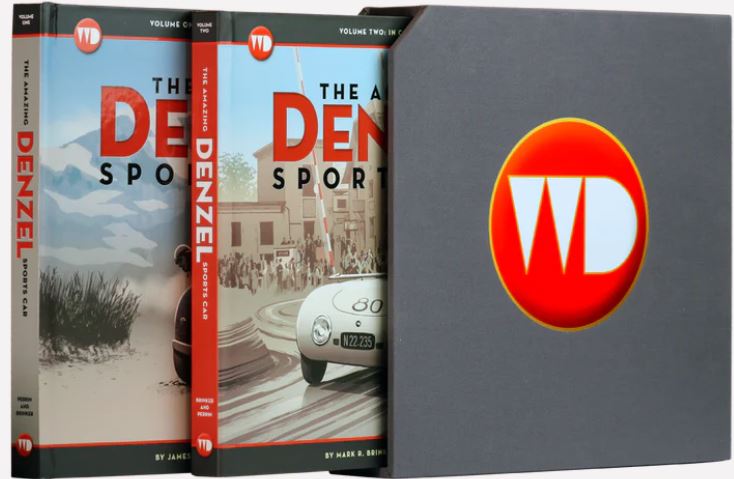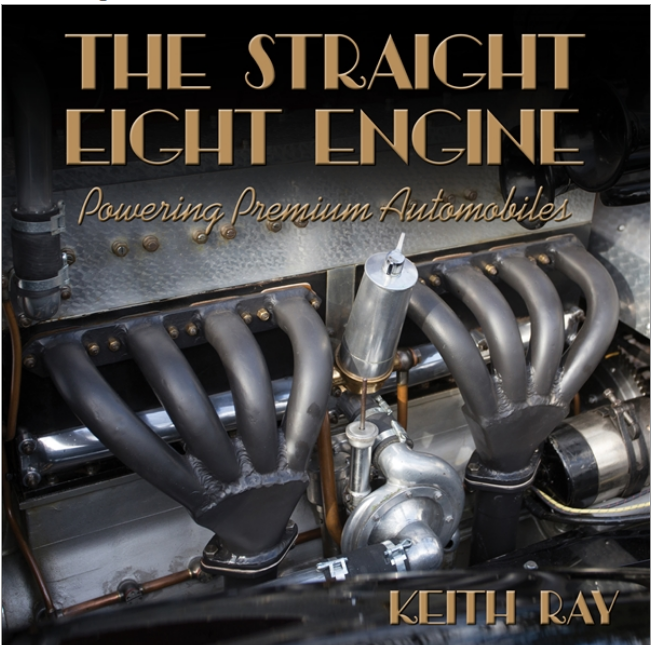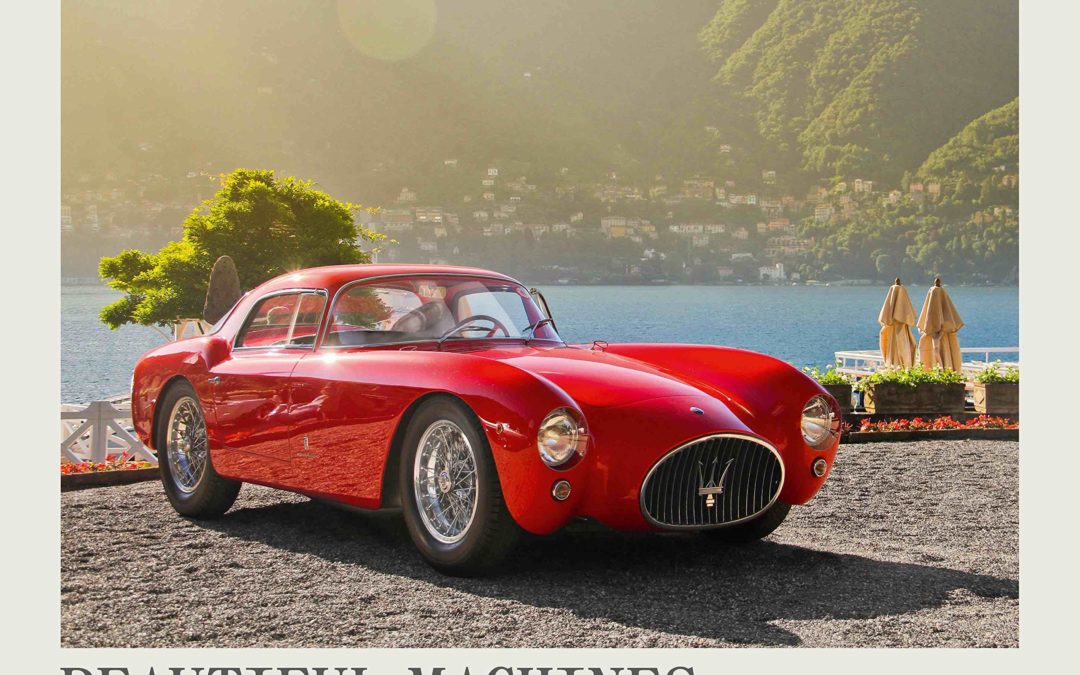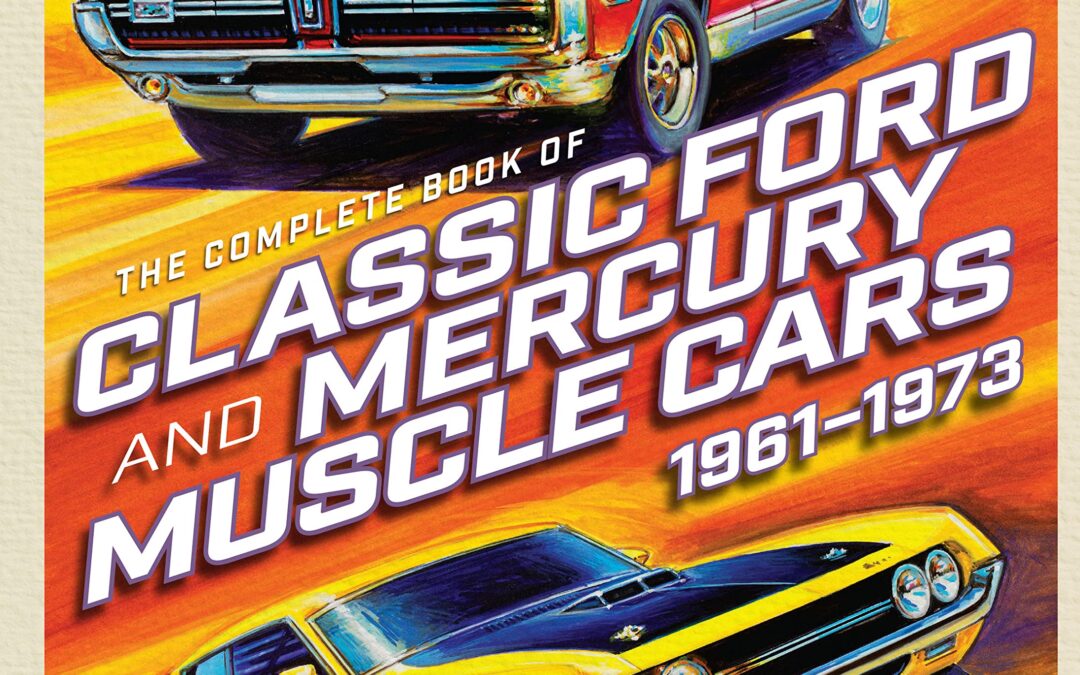
Take a stunningly illustrated and highly detailed tour through all of Ford Motor Company’s high-performance muscle cars from 1961 to 1970.
Though the Mustang remains Ford’s most famous muscle car, the company had been building muscle cars since it introduced the sleek Fairlane and Galaxie models with optional 390 cubic-inch big-block V-8 engines in 1961.
These cars were part of Ford’s Total Performance program, which tested cars in the crucible of racing at drag strips, oval circuits, European rally events, and road courses, resulting in legendary muscle cars like the Shelby Mustang, Boss 302 and 429 Mustangs, Mercury Cougar, Cyclone GT, and Spoiler.
The Complete Book of Classic Ford and Mercury Muscle Cars profiles every muscle car Ford produced during this exciting time in American automotive history. This comprehensive volume includes:
Detailed profiles of every Ford muscle car produced from 1961 to 1970, including specs for each
- Expert commentary by celebrated Mustang author Donald Farr
- Stunning modern and archival photography showcasing the cars and their engines
- Period advertisements that give a peek into the cultural era they were created in
This is the bible of muscle every disciple of Ford performance needs.
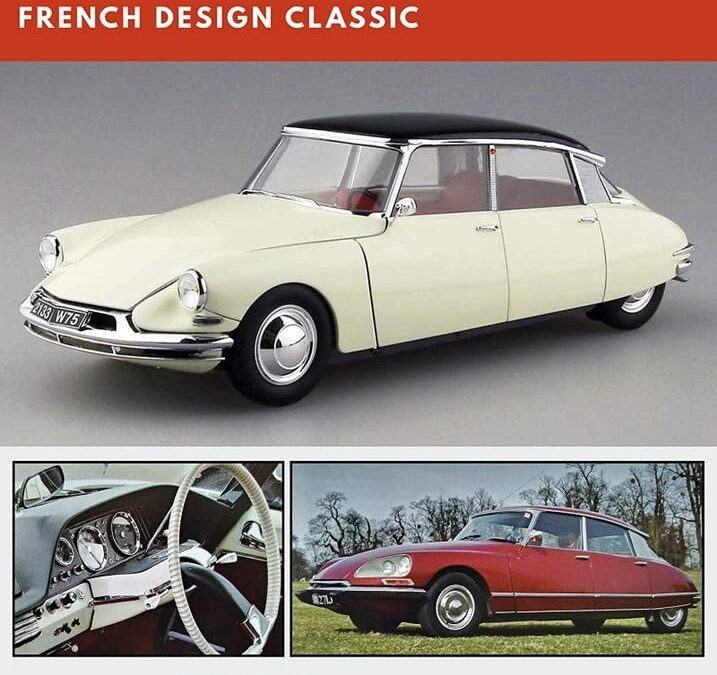
Launched in 1955 yet looking like a sci-fi design proposal for a future then undreamed of, Flaminio Bertoni’s ellipsoid sculpture with wheels that was the Citroën DS stunned the world.
There was a near riot at the 1955 Paris Motor Show launch of the car, orders flooded in for this, the new ‘big Citroën’ (a Voiture a Grande Diffusion or VGD) as the car that replaced the legendary Traction Avant range.
The term ‘DS’ stems from two Citroën parts of nomenclature – the type of engine used as the 11D, (D) and the special hemispherical design of the cylinder head as ‘Culasse Special’ (S): DS out of ‘Deesse’ or Goddess, was a more popular myth of ‘ DS’ origination, but an erroneous one.
But it was not just the car’s aerodynamically advanced body shape (Cd. 0.37) that framed the genius of the DS: hydro pneumatic self-levelling suspension, advanced plastics and synthetics for the construction of the roof and dashboard/fascia, and amazing road holding and cabin comfort were some of this car’s highlights.
Only the lack of an advanced new engine was deemed a missed opportunity. In fact Citroën had created a new engine for the car but lacked the resources to produce it in time for 1955.
DS was a major moment in the history of car design, one so advanced that it would take other auto manufacturers years to embrace. Yet DS in its ‘aero’ design was the precursor to today’s low drag cars of curved form.
Manufactured worldwide, used by presidents, leaders, diplomats, farmers and many types of people, the DS redefined Citroën, its engineering and design language, and its brand, for decades to come.
Prone to rust, not the safest car in the world, and always lacking a smoother powerplant, the DS still became an icon of car design.
Reshaped with a new nose and faired-in headlamps in 1967, DS remained in production until 1975.
Across its life DS spawned an estate car variant as the ‘Safari’, a range of limousines, two-door convertibles, and even coach-built coupes and rally specials.
This car was a product design that became an article of social science – it was that famous and it defined a European design movement upon a global stage then packed with ‘me too’ copyist designs.
The DS or ‘Goddess’ as it was tagged, was a tear-drop shaped act of French confidence in a world of the regurgitation of the known. Some argue that DS and its effect has never been surpassed.
This new value-for-money book provides innovative access to the design, history, and modeling of the revolutionary DS – one of the true ‘greats’ of motoring history and, a contemporary classic car of huge popularity.

Porsche 356: 75th Anniversary relates the full story of Porsche’s original sports car from the first Gmund coupe to today’s beloved collector car.
Ferdinand Porsche was a brilliant engineer who, prior to World War II, had been involved in a variety of significant automotive engineering developments including the first hybrid drive vehicles. From the early 1900s, Porsche was developing racing cars including the Mercedes SSK and the mighty Auto Union Grand Prix. During this period, Porsche also developed the groundbreaking Volkswagen, which would prove critical to his postwar, namesake automobile manufacturer.
The Typ 356 was developed by Ferdinand’s son “Ferry” Porsche and introduced in 1948. Though the rear-engine layout was based on the Volkswagen, most similarities ended there. The 356 had a unique chassis, higher performing engine, and a handsome wind-cheating body. Little known outside Germany initially, by the early 1950s the 356s were lauded for their excellent handling, build quality, and growing volume of competition successes.
Porsche’s 356 evolved over its 17-year life through four distinct series: pre-A, A, B, and C, with coupes, cabriolets, Speedsters, Hardtops, and Roadsters among the many body variations. Equipped with the “Carrera” 4-cam engine, the 356 was a force in sports car racing. Dedicated competition models were developed beginning in 1953, and the Rennsport Spyders dominated road racing, endurance, and hill climb events for over a decade.
The 356 story includes a cast of fascinating characters, from those engineers who designed the cars, to race drivers who built the “giant-killer” mystique, to owners like James Dean and Janis Joplin who fell in love with the little bathtub-shaped sports cars. From titled European gentlemen in the 1950s to movie stars like Paul Newman and Steve McQueen in the 1960s, the first Porsches attracted enthusiasts and racers alike. Today, the car has an even wider following among collectors including Porsche fans like Jerry Seinfeld and Jay Leno. “356 Fascination” continues with ongoing restoration efforts, vintage racing, and an “Outlaw” movement, all enhanced by large-scale events that celebrate the car’s history.
Porsche 356 75th Anniversary tells the in-depth story and is a must-have book for anyone that loves Porsche and sports car history.

Paul Frère – Le Mans winner, Grand Prix driver, and Road & Track magazine’s European editor – has prepared a new edition of his classic, Sports Car and Competition Driving. First published in 1963, Sports Car and Competition Driving sold tens of thousands of copies, establishing it as a standard reference on driving. In his revised edition, Frère builds on the strengths of the original by explaining how to meet the new challenges posed by radical new developments in automotive technology. What separates Frère’s book from other driving texts is his unique blend of theory and practice, based on a career as racer and trained engineer: Memorable observations on how to go faster combined with sophisticated discussions of the physics that govern a car. With 78 photographs and illustrations, Sports Car and Competition Driving is required reading for all those interested in racing or in becoming a more masterful road driver.
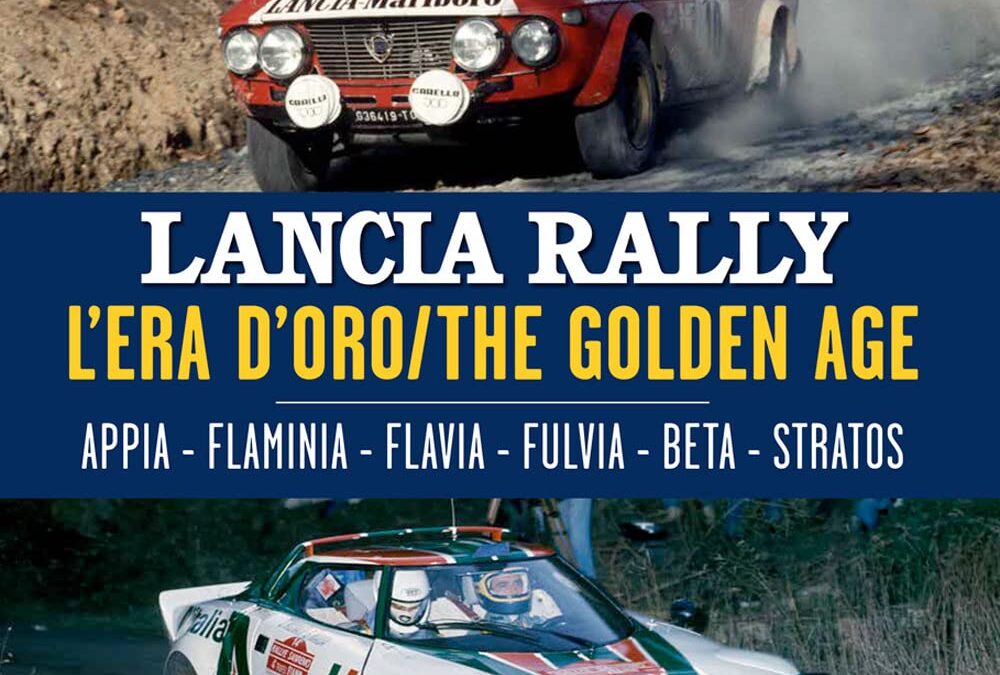
Following the book Lancia Rally Group B, Sergio Remondino has returned to the rallying world with a book examining the golden age of Lancia in the World Rally Championship. We start in the early 1960s, when a numerous group of enthusiasts began using Lancia cars – Appia, Flavias and even Flaminias – for the road races of the time, the forerunners of the rallies that were to come.
The creation of HF at the behest of Cesare Fiorio, together with the advent of the Fulvia, created an authentic watershed and the definitive consecration of the Lancia marque on a global level.
Between 1962 and 1982, Lancias conquered one Constructors’ title and four European Championships, three Constructors’ World Championships and two FIA Drivers’ cups, writing indelible chapters in the history of the sport, thanks to drivers and cars of absolute excellence, all of which relive in this invaluable book.
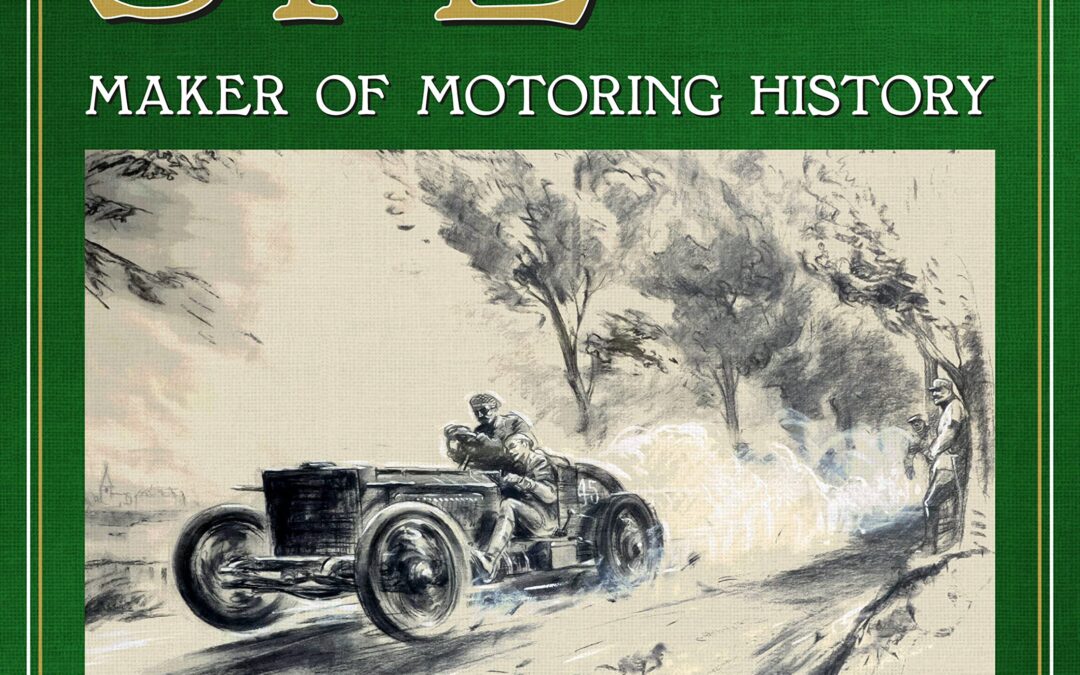
Selwyn Francis Edge, invariably known simply as ‘SF’, was a highly significant pioneer of motoring in Britain. When, in 1902, he drove a Napier to victory in the Gordon Bennett Cup, a mighty event on public roads between Paris in France and Innsbruck in Austria, he initiated serious British endeavour in motor racing.
He was deeply involved in the birth of Brooklands, setting a 24-hour solo driving record there when the circuit opened in 1907. As a towering industry figure most closely associated with Napier and AC Cars, he played an important role in the growth of car manufacture in Britain. In the words of ‘Bentley Boy’ S.C.H. ‘Sammy’ Davis, ‘His keen grey eyes, the bushy eyebrows and the hawk-like face… made him a notable figure in any assembly.’
- Dedicated cyclist: SF’s early interest in cycles led to racing achievement on two wheels and three, including setting records for round trips between London and Brighton, and taking
- Introducing the motor car to Britain: from his first driving experience, in 1897 with a De Dion-Bouton, SF quickly became an influential advocate of all things automotive in a country that initially lagged far behind France.
- Motor racing pioneer: after early competitions on motor tricycles, SF became a regular competitor in the heroic long-distance races of mainland Europe, famously winning the 1902 Gordon Bennett Cup in a Napier and becoming a national celebrity.
- Growth of Napier: with SF as a guiding force, this long-established engineering company evolved into the manufacturer of some of the finest cars of the Edwardian era.
- Brooklands: upon the circuit’s opening in 1907, SF drove a Napier solo for 24 hours at an average speed of just over 65mph, establishing a record that stood for 18 years.
- AC Cars: after the First World War, SF helped to develop AC Cars into an important manufacturer of sporting cars, with more attempts at speed records along the way.
This biography uncovers the life of an extraordinary man whose achievements deserve to be far more widely recognised.
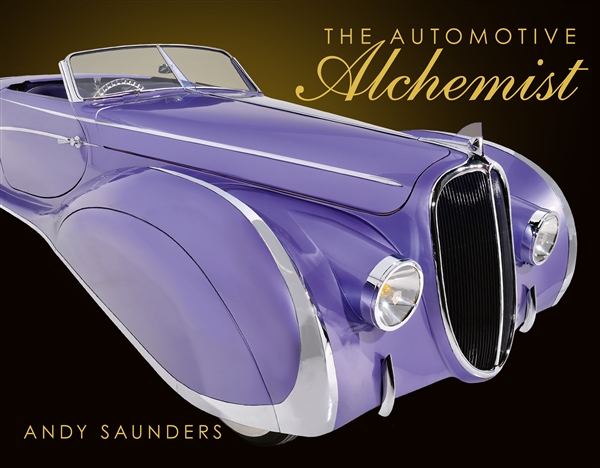
Andy Saunders’ ‘Automotive Alchemist ’ is a roller-coaster ride through the highs and lows of this charismatic man’s life. From the early years of learning the basic skills of cutting and shaping metal then painting and airbrushing, to his mature creations, restorations and the inherent genius of his designs. Andy welcomes us into his workshop and his head: not afraid to express his emotions, as he deconstructs and then rebuilds each vehicle, he lays bare his motivations, inspirations, influences, and passions. Intertwined in the narrative is the work involved in the creation of 60 cars, described here with many detailed photographs.
Forty-two of Andy’s creations now reside in museums and private collections across the globe but the most unusual fate is that of Flat Out, the Guinness Book of Records acclaimed Lowest Car in the World, which is now a coffee table in the foyer of a huge Californian corporation.
The book is not a technical ‘how to create wild custom cars’ manual. Rather it is a celebration of Andy’s joy of creation and his design genius, though tempered by personal traumas and losses. He has, on many occasions, been referred to as the British George Barris, the American “King of Kustomizers.” Unlike many biographies, this book engages the reader with its honesty and humour.
Andy Saunders grew up in Poole on the south coast of England and developed an early relationship with the building and customising of cars. His first project was finished before he was old enough to hold a British driving license.
Since that first project, his journey to become Britain’s leading and most recognisable ‘Car Artist’ has evolved. With his painstaking attention to detail and his knowledge of the styling masters from bygone eras, his creations have always been unique and, occasionally, controversial.
Never shy of turning his ideas into reality or taking unexpected opportunities to fruition, Andy has, on occasions, thrown away the accepted rule book and created some truly amazing vehicles: making a Citroën CX into a road-legal alien craft; turning Ford’s 1958 X-2000 ‘car of the future’ model into a full-sized reality and creating a Cord coupe that the factory would have been proud to call their own.
Andy has three Guinness Book of Records certifications: twice for the ‘lowest car in the world’ and once for the ‘lowest van in the world’ which remains unbeaten and has been approached by film companies and undertaken commissions for major car manufacturers. But mostly he builds whatever has inspired his creative juices from lowriders, Incantation, to shortened Minis, Mini Ha Ha; from restyling a Bentley Mulsanne, which was acclaimed by the Rolls-Royce and Bentley Owners Club as “the most beautiful coachbuilt Bentley to have been built since WWII”, to a 2CV inspired by Picasso – Picasso’s Citroën; and from his drivable version of Bertone’s Lancia Stratos Zero to his Art Deco creation of a rare 1939 Peugeot, Metropolis, inspired by Fritz Lang’s 1927 masterpiece of the same name.
During the past four decades Andy has restored Cord, Pontiac and Rolls Royce vehicles. Rescued and restored the unique and much-maligned 1957 Aurora Safety Sedan and realised an affinity with the great designer Alex Tremulis. Andy’s creations have appeared in exhibitions, on television and in magazines as far afield as Australia, Korea, America, the UK and Europe and many of his vehicles nowadays reside in museums and collections from California to Japan and from Europe to the Middle East.
And so to his latest masterpiece, Déjà: inspired by a 1930’s popular French girls name, some body panels he didn’t want or need and the pinnacle of French coachbuilding, Andy has created this Delahaye, a hand-built steel roadster. This beautiful cross between Joseph Figoni’s 165s and Jacques Saoutchik’s 175 somehow appears to be some eighty-five years late for her debut at the Paris Salon de l’Automobile.
- 464 pages
- Hard cover with dust jacket
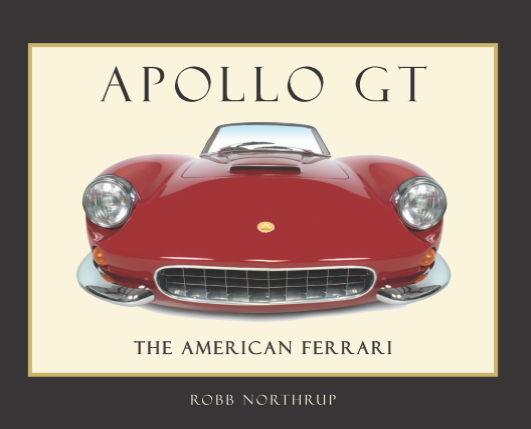
‘If a Buick Special ever got a fierce ambition to become a Ferrari – and tried hard enough – it would be likely to end up just about like this.”
Car and Driver magazine – September, 1963
Such prophetic words from Car and Driver magazine back in 1963 underscore the goal of three California twenty somethings who sought to build a world-class grand touring sports car. And, for a while, found themselves on equal ground with Europe’s best.
Their concept: A marriage of Italian style and the mechanical excellence of a premier American manufacturer – Buick – to create a true gran turismo sports car with head-turning looks, outstanding performance and comfort, and something that, up to then, was not common among European exotics: Reliability!
Their challenges were legion: A complex product combining hand-crafted bodies with mass-produced engines and transmissions on an assembly line spanning two continents and an ocean. A limited capability for product development and testing. And the need to create a marketing program to promote the car to an enthusiast public as well as develop a distribution channel to get the car into their hands. All this with limited operating capital.
The result? The Apollo was highly praised by both road testers and owners alike. “Workmanship is of the highest quality…comparable to cars costing twice that of the Apollo” crowed one magazine report. “…the Apollo handles as well or better than a 2+2 Ferrari, an Aston Martin DB4 or a Sting Ray Corvette,” exclaimed another. High praise indeed from the critical press!
And the owners? “I dearly love my Apollo!” enthused singer Pat Boone. And this from another owner: “It’s a wonderful work of art. You can see the quality. You can feel the excitement they felt when they were hammering it out, putting it together and driving it for the first time. It is a milestone, a one-of-a-kind car and no one can really compare anything to it. It stands on its own.”
This is the story of the Apollo GT. The American Ferrari.
Details: 8.5″ x 11″, 138 pages. 87 color and black & white photos and illustrations.
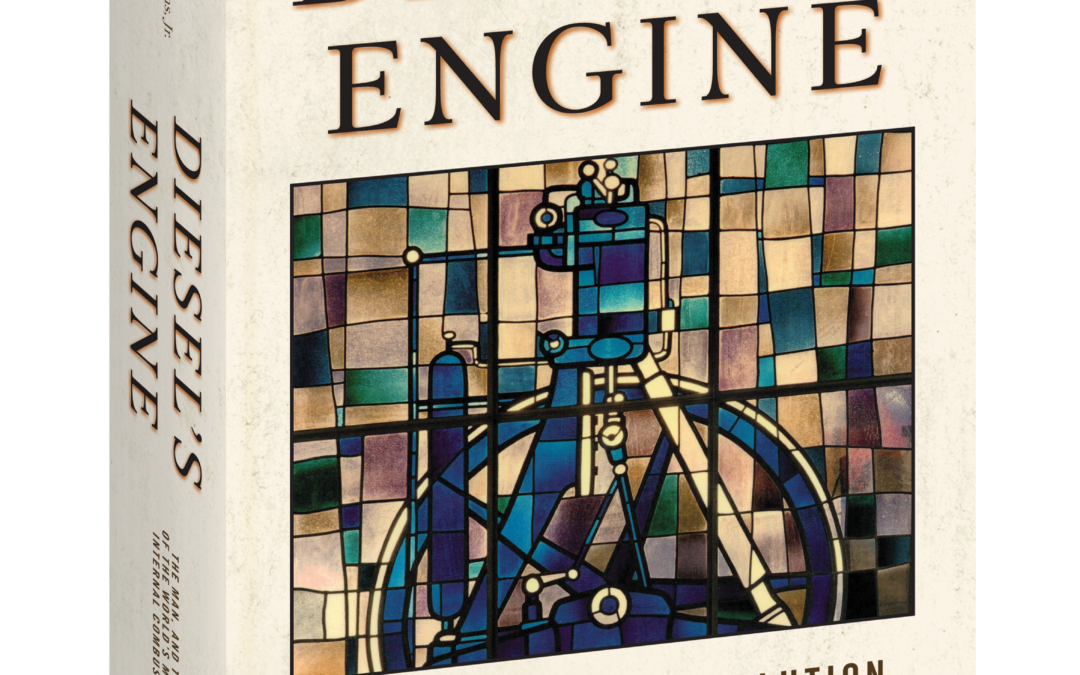
This is a reprint of Diesel’s Engine, first published in 1993. The book is a fantastic resource for serious fans of engine evolution and a great read as well. If you are interested in how the combustion engine came to be, this book and its companion, Internal Fire, are vital reading. We at Octane Press believe it to be a critical piece of automotive history and are happy to have a revised edition to offer to our readers.
C. Lyle Cummins Jr. continues his series on the internal combustion engine’s heritage in Diesel’s Engine. This engaging book is a fascinating and comprehensive history of the diesel engine, written by the son of Cummins Engine Co. founder, Clessie Cummins.
This is a companion book to Internal Fire: The Internal Combustion Engine 1673-1900 and covers in dramatic detail the entire sweep of Rudolf Diesel’s original ideas: the struggles to perfect the diesel engine, and the creation of an international industry that brought the world’s most efficient motor to market. Illustrated with black and white photos and period line drawings, this is a must-read for any serious enthusiast for engine and transportation technology.
Cummins is uniquely qualified to tell the diesel story. Raised in the family of America’s automotive diesel pioneer, his career as a mechanical engineer includes the design, development and marketing of diesel engine retarders and fuel systems for which he was granted five US patents. He has received several notable awards for his writings on I-C engine history. Cummins has devoted over two decades exhaustively researching his subject in corporate and museum archives throughout Europe and the United States to provide this definitive history of the diesel.
Accolades for Diesel’s Engine
“ … eminently readable, even by the mechanically innocent, treating his subject with humor, understanding and affection.” –Road & Track
“This new book is an enjoyable and informative . . . treatment of the subject, from its conception in the mind of Rudolf Diesel . . . until 1918. The author is eminently qualified to write on this subject.”–Waterways Journal
“[It’s] ‘user-friendly,’ and well worth the time spent for the sheer volume of information included.”– Gas Engine Magazine
“It’s a treasure trove of information . . . In short, the world will owe a big round of thanks to Lyle Cummins . . . for completing this very impressive work.”– Wheels of Time, American Truck Historical Society
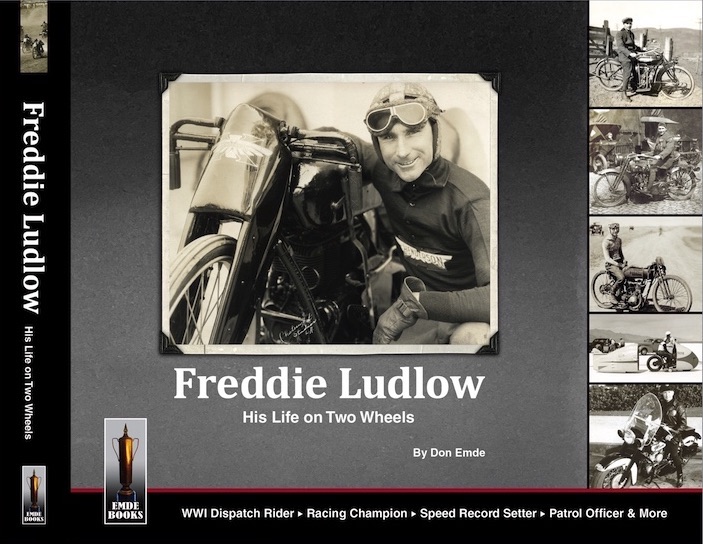
HOT OFF THE PRESS!
Freddie Ludlow. His Life on Two Wheels, by Don Emde
Back in 2020, The Speed Kings. The Rise & Fall of Motordrome Racing, by Don Emde, received the Best Book of the Year award by the Motor Press Guild. Now, you can be among the first to own a copy of his latest book, Freddie Ludlow. His Life on Two Wheels. Available now!
The seeds of the idea for this book were planted over twenty years ago when author Don Emde was entrusted with the care and ownership of a scrapbook of Freddie Ludlow, an early day motorcycle pioneer. With nearly 100 pages of the scrapbook photos organized chronologically with Ludlow’s own handwritten captions, what was obvious was that he was a man of adventure and competitive spirit, who also answered the call to serve his country.
Freddie Ludlow’s motorcycling life began as a delivery boy for Western Union on the streets of downtown Los Angeles around 1910. Local competitions followed until he enlisted in the Army and put his motorcycling experiences as a rider and mechanic to use in Europe during World War I. Upon his return home, Ludlow became one of the top motorcycle racers in the United States, rising to the level of National Champion in 1921. A few years later, his sense of service again saw him finding ways to put motorcycles to good use when he became a motor patrol officer in Pasadena, California, a job that he would have for the next thirty years.
His new “day job” didn’t mean, though, that Freddie was done raising the bar in the motorcycle sport when it came to speed and performance. Through the 1920s and ‘30s, he set numerous speed records on the hard packed sand at Daytona Beach, Florida; on the Bonneville Salt Flats, even along a stretch of public road near San Bernardino, California.
Freddie Ludlow died in 1983, but his amazing motorcycling life lives on in Freddie Ludlow. His Life on Two Wheels. It features not only his scrapbook pages but also many pages written by Don Emde filled with back stories and additional rare and historic photographs of Ludlow and many other legendary racers who were his competitors.
176 pages – Hardbound – 10 x 12 inches
Highly illustrated – 400+ photos and related images
Printed in sepia-tone throughout with retouched black & white photos from Freddie Ludlow’s scrapbook pages, plus some limited color images.
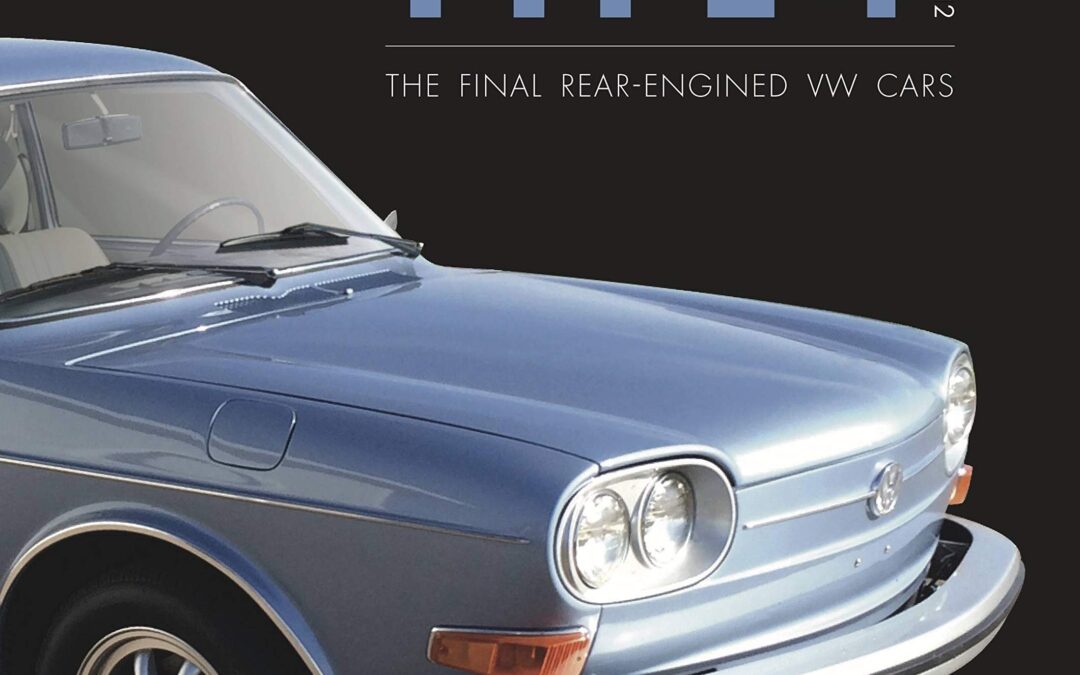
What kind of car is that? It looks like a big Beetle! If ever there was a car in search of a context and market, it was the VW Type 4. Volkswagen’s first foray into the upscale sector brought engineering innovation to Wolfsburg. It also tried to convince worldwide buyers that VW still had the right stuff. With design origins in the Porsche consultancy, the signs were hopeful. However, globally, the automarket was rapidly changing.
The VW Type 4’s portfolio ran to unitary construction and fuel injection, but had to face fancy competition from Detroit’s European subsidiaries. All the while, VW was searching for its future road, and faced challenging developments. The fuel crisis and Japanese competition in North America kept the pressure on at Wolfsburg.
Could the VW 411 and 412’s solid traditional virtues carry the day? Then and now the Type 4’s unbreakable VW quality, and flat out sustainability, appealed to air cooled devotees. The 411 and 412 brought a new dimension in comfort to VW, and its hardware design was utilized by the air cooled clan both on and off road. The Type 4 even had a sports car connection, and never lost the power to surprise.
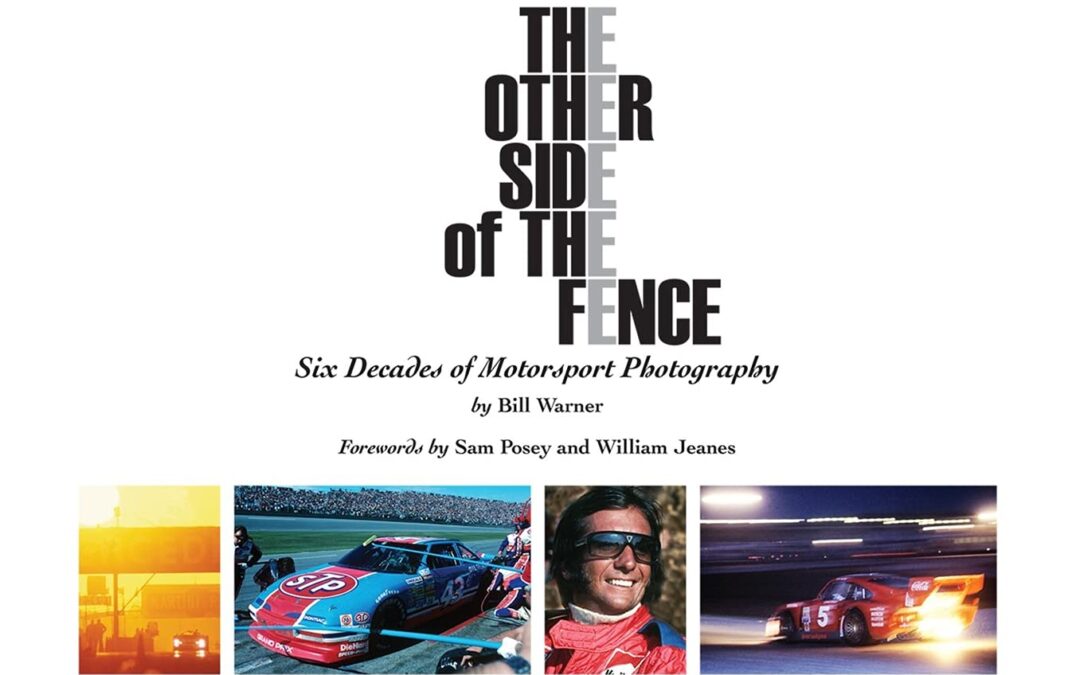
Six Decades of Motorsport Photography
The Other Side of the Fence: Six Decades of Motorsport Photography is a collection of
motorsport photographs spanning six decades shot by Bill Warner, Founder and
Chairman of The Amelia Island Concours d’Elegance. From his home base in
Jacksonville, he traveled the world photographing the drivers, cars, and racing action
from Daytona to Le Mans including Indy cars, World Championship of Makes, IMSA,
NASCAR, and Formula 1. His images have graced the pages of Road & Track, Sports
Car Graphic, The Atlantic Monthly, Automobile Year, Car and Driver, Autoweek,
Automotor und Sport (Germany), Classic and Sports Car, and Thoroughbred and
Classics (UK), and a host of other motoring publications from Australia to Eastern
Europe. He is the recipient of the Sports Car Club of America’s (SCCA) Photographer of
the Year and won recognition from the Los Angeles Art Directors and the Creative Arts
Yearbook. His work is on permanent display at The Brumos Collection and has been on
featured at the Petersen Museum and The Meadow Brook Concours d’Elegance.
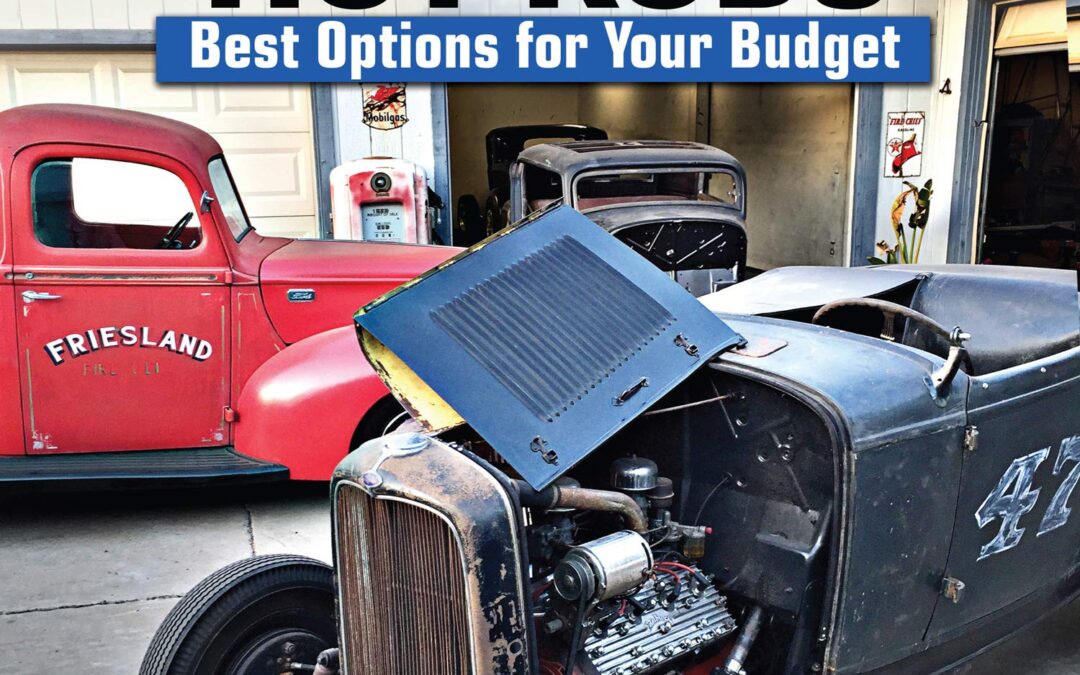
Learn how to build an affordable hot rod following the advice of the masters!
In How to Build Affordable Hot Rods, author and lifelong hot rod aficionado Tony Thacker takes you through the process of building a hot rod on a budget. Drawing on his own extensive experience of both buying and building rods, Thacker explores the good, the bad, and the ugly. The good was setting a land speed record at Bonneville, the bad was buying a rod from which the previous owner had “swapped out” the good engine, and the ugly–well, let’s just not go there. How to Build Affordable Hot Rods includes extensive how-to sections that cover step-by-step chassis builds for Model A, 1932, and 1936 Fords, including front- and rear-end setups. The in-depth chassis builds are complimented with sections on powertrain choices, bodywork and roof chops, wheels and tires, and wiring and paint. Also included are chapters on interiors and the all-important details that individualize any project to ensure that it stands out from the rest.
When Henry Ford introduced his beloved Model T, he unwittingly gave the average person the means to go racing. Prior to the T, racing was mostly a sport of the rich, but that changed with the Model T. Stripped of fenders and hopped up with speed parts, T speedsters ruled, and it wasn’t long before enthusiasm on the track translated to the street and the term hot rod entered the vernacular.
Of course, it didn’t need to be a Ford (and still doesn’t), but the easiest and therefore cheapest route to Hot Rod Boulevard is down the Ford road. The journey accelerated after World War II, as hot rodding boomed with the growth of speed shops, car shows, drag racing, talented and trained GIs returning home, and the launch of Hot Rod magazine to spread the gospel far and wide. More than 100 years after the original Model T, hot rodding remains alive and well in the Australasia, Europe, and (of course) its birthplace the US.
Learn from the best and get started building your affordable hot rod today!

Carroll Shelby wasn’t born to run. He was born to race some of the fastest cars ever to tear up a speedway.
Carroll Shelby wasn’t born to run. He was born to race some of the fastest cars ever to tear up a speedway. The exciting new feature film Ford v Ferrari–starring Matt Damon as Shelby and Christian Bale as fellow racer Ken Miles–immortalizes the small-town Texas boy who won the notorious Le Mans 24-hour endurance challenge, and changed the face of auto racing with the legendary Shelby Cobra. But there’s much more to his high-velocity, history-making story.
A wizard behind the wheel, he was also a visionary designer of speed machines that ruled the racetrack and the road. While his GT40s racked up victories in the world’s most prestigious professional racing showdowns, his masterpiece, the Ford Cobra, gave Europe’s formidable Ferrari an American–style run for its money. If you’ve got a need for speed, strap in next to the man who put his foot down on the pedal, kept his eyes on the prize, and never looked back.
Originally published in 1965 as The Cobra Story by Carroll Shelby
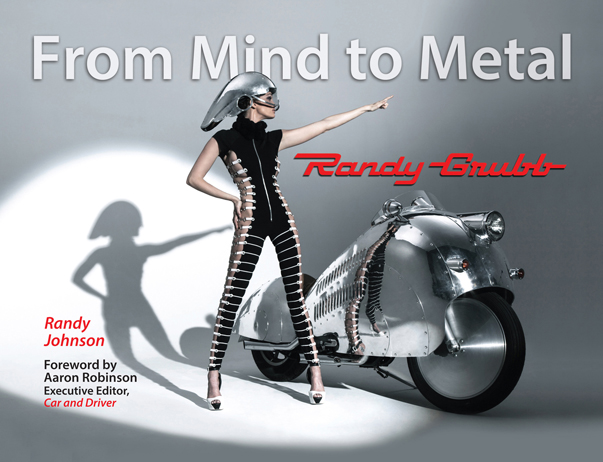
From Mind to Metal is the definitive book on the life and work of automotive artist Randy Grubb, who sold his first giant hot rod, the Tank Car, to Jay Leno. Grubb followed that up with a string of hits — the Indy Special, the B-702, Piss’d Off Pete, the DecoLiner, the DecoPods, the Decoson, Bob “Rocket Man” Maddox’s Pulse Jet Lakester, Tim “Frogman” Cotterill’s Rocket 3, and the Falconer Dodici: all have been appreciated internationally by gear heads, lovers of Art Deco and the Streamline styles, as well as by traditional American and European coach builders.
Aaron Robinson, executive editor of Car and Driver, wrote the foreword for the book, offering humor-injected insights into Grubb’s motivations for creating his extreme hot rods. Carolyn Pavia-Rauchman, copy chief of Car and Driver, signed on as editor.
Author Randy Johnson has documented Grubb’s sculpture since 2012, often visiting Randy’s Grants Pass, Oregon, garage several times a week. He produced the YouTube video series, Randy Grubb’s Garage, and was able to get the inside story on Grubb by accompanying him on two road trips in the extraordinary, Flash-Gordonesque DecoLiner. In researching the book, he interviewed Grubb numerous times, as well as the builder’s family, and many of his friends and collaborators.
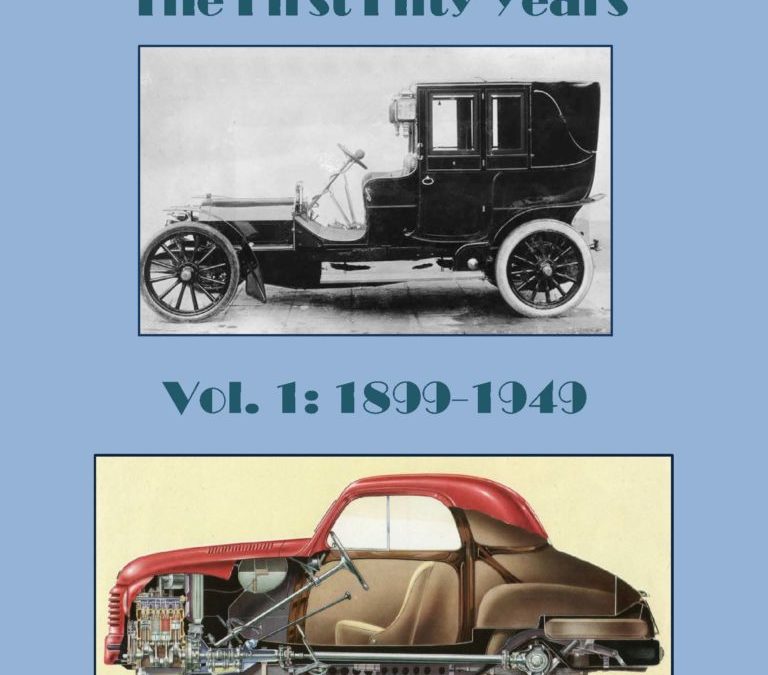
This new book traces the history of the FIAT (Fabbrica Italiana Automobili Torino) company from foundation in 1899, when a group of well-to-do young men decided to found one of the first Italian motorcar manufacturers in Turin, having watched imported French cars putter around and realising their country had no equivalent industry. One of the founders, Giovanni Agnelli, addressed a meeting of fellow-founders on 11th July 1899 thus: “We cannot waste any time. You should have seen what I saw the other day on my trip to Nice. Hannibal is at the gates. In France, even the public sector is starting to use the motorcar.”
Fiat today is a pre-eminent European motor manufacturer producing a wide range of cars to suit every need and budget, cars always cleverly engineered and elegantly styled.
This is volume 1 of 2, a historical survey of 100 years of Fiat cars. The first book covers a fifty year period from 1899-1949, which witnessed the creation of the Fiat businesses and the creation of many innovatively engineered popular cars and trucks as well as aircraft which saw action during two wars.
Competition successes were legion during the period. Fiat attracted brilliant engineers and talented managers, many of whom became legendary names in the annals of motoring history. Without their creative genius, knowledge and skills the company might not have gotten where it is today- bumpy thought the road has been many a time.



